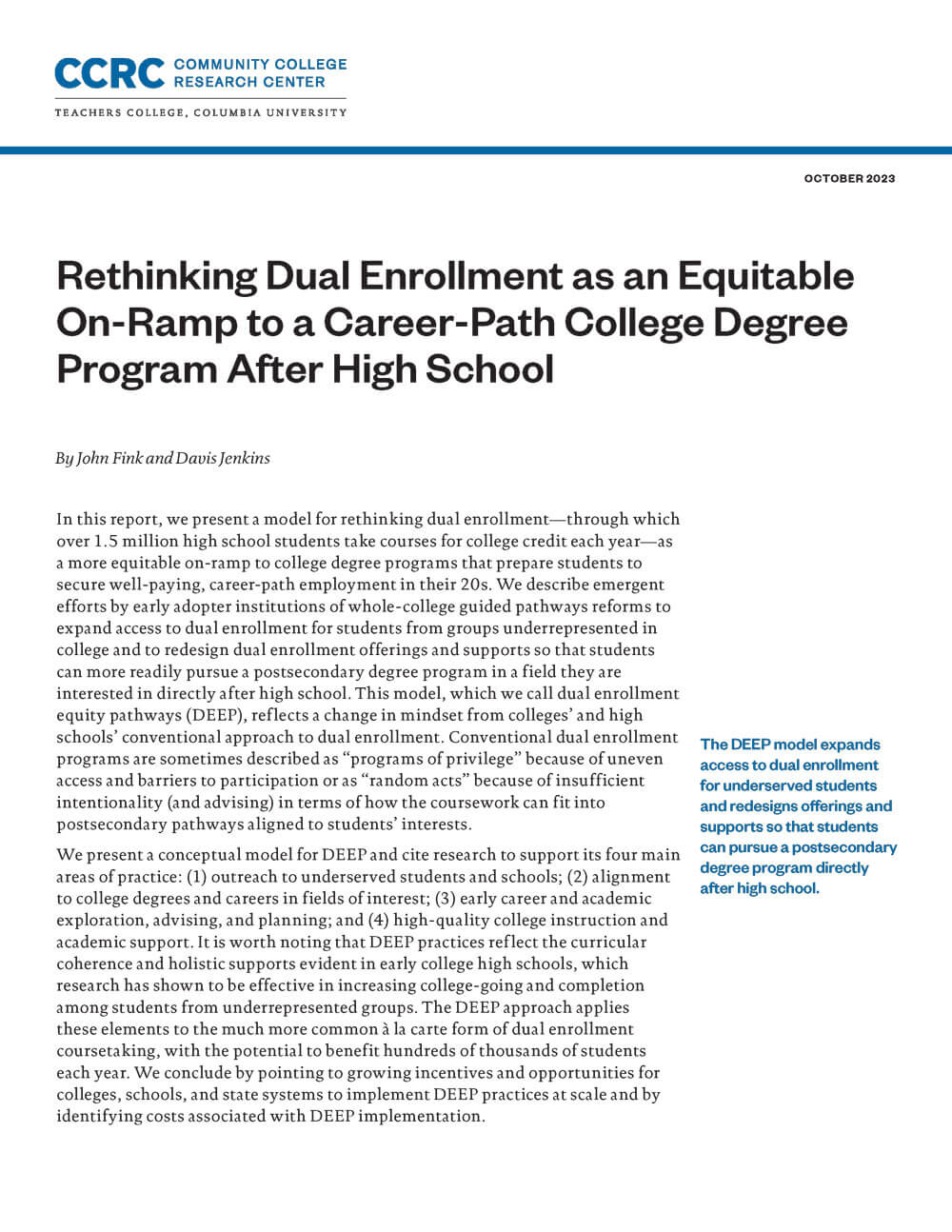
Dual enrollment (DE), in which high school students take college courses and earn both high school and college credit, has great potential to help make the high-school-to-college transition more effective and equitable—and to do so on a large scale. There is strong evidence that DE improves academic outcomes for students, including completing high school, enrolling in college, and completing college degrees. Some of the most compelling evidence comes from research on the impact of Early College High Schools (ECHSs), but these schools operate on a smaller scale than less intensive models of à la carte dual enrollment. The vast majority of high school students participating in DE take à la carte courses on a college campus, online, or in the high school. While there is evidence that this type of DE coursetaking benefits students, students of color, English learners, and students with disabilities are underrepresented in DE overall, and the laissez-faire approach to à la carte DE tends to exacerbate equity gaps in the high-school-to-college-transition.
In this report, the authors present dual enrollment equity pathways (DEEP), a model for rethinking dual enrollment as a more equitable on-ramp to college degree programs that prepare underserved students for well-paying, career-path employment in their 20s. The authors draw on emergent efforts by early adopter institutions of whole-college guided pathways reforms and on additional research to outline and describe support for the DEEP model’s four areas of practice: (1) outreach to underserved students and schools; (2) alignment to college degrees and careers in fields of interest; (3) early career and academic exploration, advising, and planning; and (4) high-quality college instruction and academic support.
The DEEP model reflects a shift in mindset from conventional thinking about DE to a more strategic approach that requires significant changes on the part of both colleges and high schools. The authors conclude by pointing to growing incentives and opportunities for colleges, schools, and state systems to implement DEEP practices at scale and by identifying costs associated with DEEP implementation.
